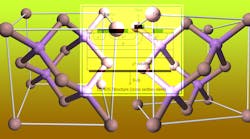Has GaN Pushed LDMOS into Irrelevance?
Back in July 2015, I wrote a column titled “GaN Taking Control” that discussed the increasing utilization of gallium-nitride (GaN) technology. Today, no one can question the impact that GaN technology has had on the RF/microwave industry. But with GaN receiving so much attention, where does this leave laterally diffused metal-oxide semiconductor—LDMOS—technology? Has LDMOS been completely pushed aside?
LDMOS technology has dominated the wireless infrastructure arena, but is that changing? The answer to that question is yes—at least, according to a recent article titled, “Realizing 5G Sub-6-GHz Massive MIMO Using GaN.” The authors, Qorvo’s David Schnaufer and Bror Peterson, point out that “high output power, linearity, and power-consumption requirements are pushing base-station and network original equipment manufacturers (OEMs) to switch from using LDMOS technology for power amplifiers (PAs) to gallium nitride (GaN).”
The article also states that “GaN performs well at 3.5-GHz frequencies and above, while LDMOS is challenged at these high frequencies.” The additional benefits of GaN are beyond the scope of this column, but I think you get the idea (check out the article for more).
So, does the emphasis on GaN mean that LDMOS is no longer relevant? That doesn’t appear to be the case, as LDMOS still figures to find homes in some applications. Of course, choosing the appropriate technology depends on the specific application at hand—and there are scenarios in which LDMOS may still be the way to go.
Take radar applications, for example. Last year, Integra Technologies published a tech brief titled, “Zero-in on the Best RF Transistor Technology for Your Radar’s High Power Amplifier Designs.” The brief explains the advantages and disadvantages of different transistor technologies that one must consider when selecting a technology for high-power applications. The point is that the requirements of an application ultimately determine the appropriate technology to use—and LDMOS is one of those technologies.
If LDMOS is still going strong, it’s a good idea to stay up-to-date about any new products that have hit the market. For instance, there’s the MRFX Series high-power products from NXP. The MRFX Series is based on NXP’s 65-V LDMOS technology, which the company says offers a number of advantages.
Is LDMOS dead? The answer appears to be a resounding “no.” Though LDMOS may not have quite the same standing it once had, the current prognosis is that it’s alive and well.

